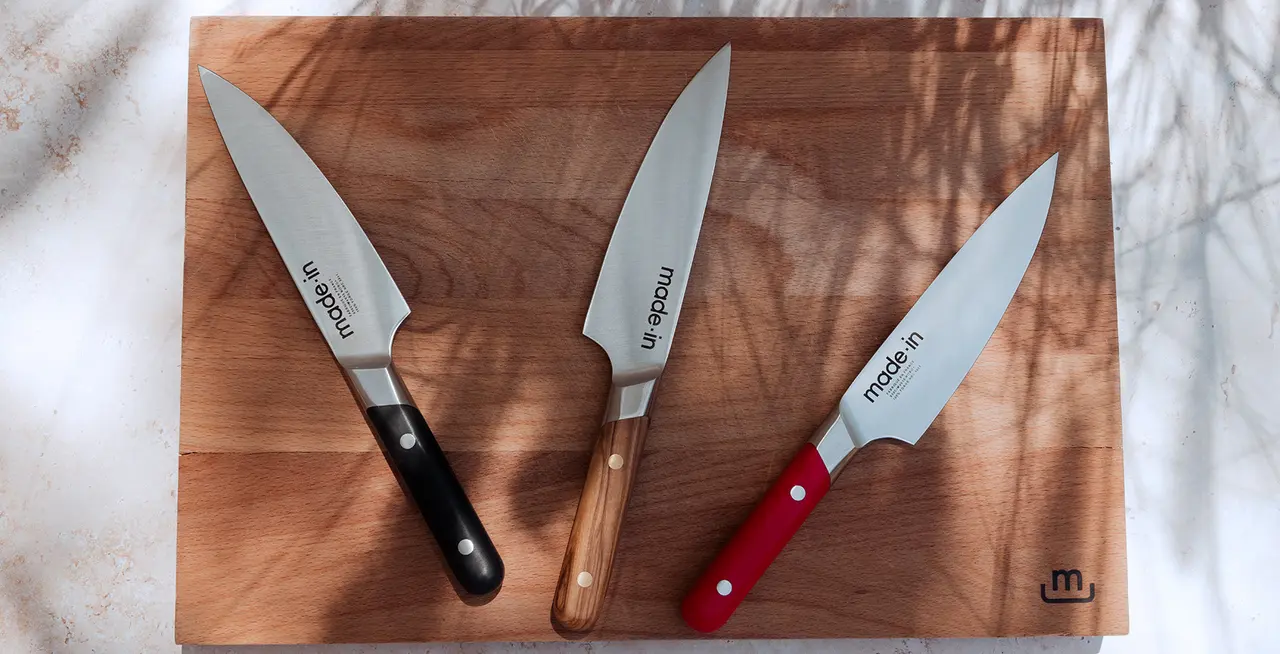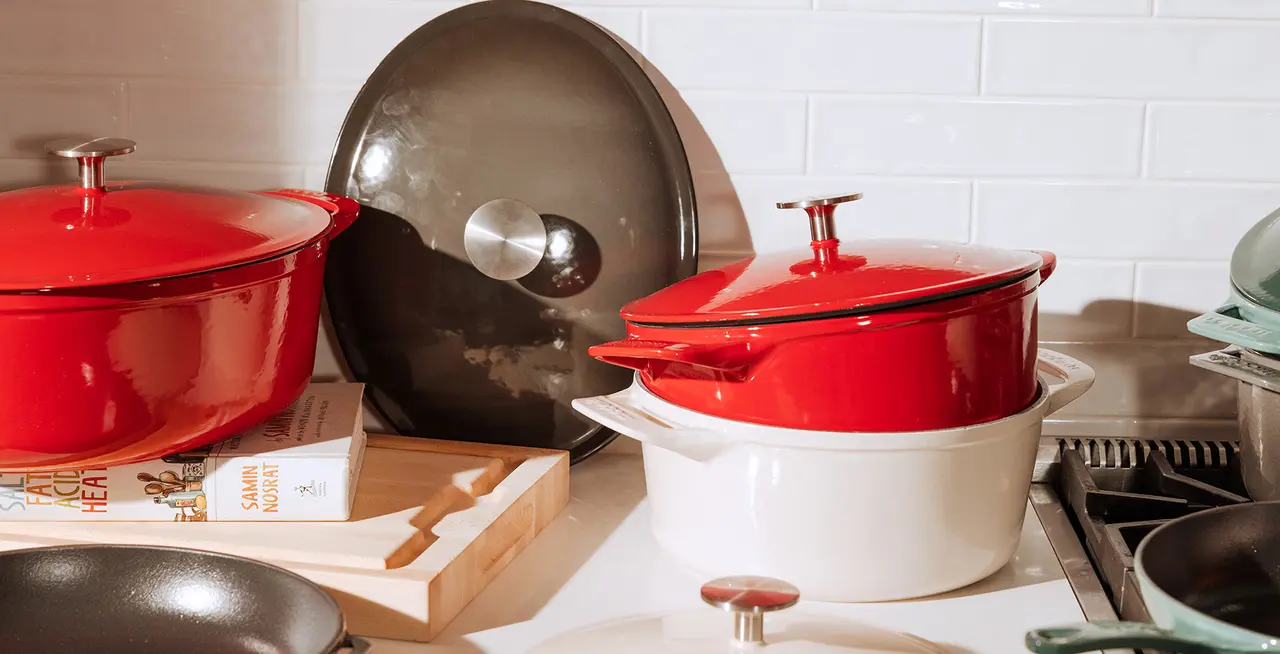You may have heard chefs say that your Chef Knife should feel like an extension of your hand. This means that it handles with ease and feels natural and comfortable to use on a daily basis, whether you’re dicing, mincing, or slicing. And, since a Chef Knife spends a lot of time in your hand, it’s important to shop around before making a decision—especially if you plan to splurge on a pricier knife.
To make sure you’re choosing the best knife for your needs, we put together a guide on the most important things to consider when shopping for a Chef Knife, from the length of the blade to the shape of the handle. And though no single Chef Knife is best suited to every chef, there are a few key indicators that will immediately tell you whether the knife you’re considering is high quality.
What Is a Chef Knife?
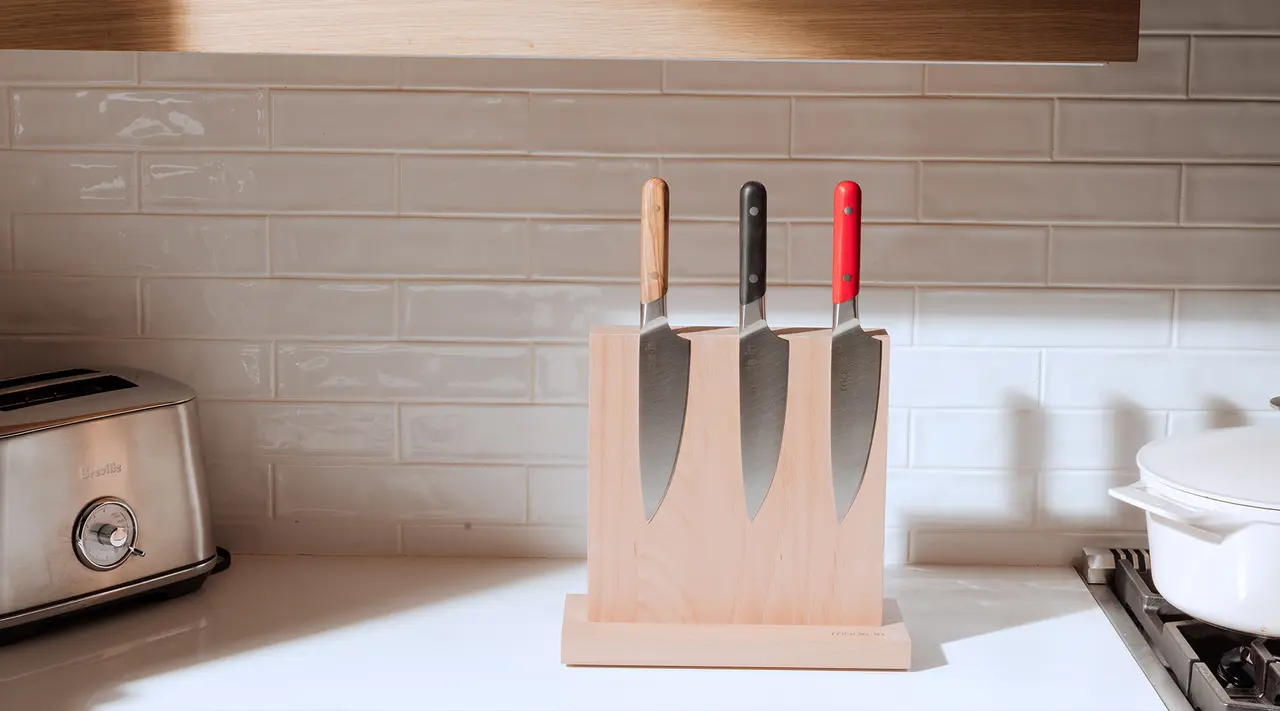
To find the best Chef Knife, you first need to understand what they are and how they function. While Chef Knives vary somewhat in terms of shape, length, and material, the majority have a slightly curved blade that tapers to a pointed tip, allowing for a back-and-forth rocking motion while chopping. This makes it easier and more efficient to plow through a pile of leafy greens, for example, without having to constantly pick up your blade.
Chef Knives should ideally have enough weight to slice through dense, heavy vegetables, and enough precision to tackle finer tasks, like chiffonading herbs. While it isn’t suited to all tasks—it can’t slice bread or beefsteak tomatoes as well as a Bread Knife or core strawberries as precisely as a Paring Knife—it’s still an essential tool for any home cook, and as close to an all-purpose blade as one can get.
What Size Is a Chef Knife?
Chef Knives range in size from 6” to 10” long (and occasionally longer), though an 8” blade is most standard. This is due to its versatility, as an 8” knife is large enough to stand up to most heavy-duty kitchen tasks, like slicing kabocha or breaking down large cuts of meat, but not so large that it’s unwieldy.
A 6” Chef Knife, however, might be better suited to chefs with smaller hands, or who plan on using their knife for less heavy-duty tasks, like prepping vegetables for a salad. Because it’s smaller and more lightweight, this size knife is also easier to hold and maneuver, reducing hand fatigue and offering a bit more control. For bigger hands, or for cooks who plan on doing a lot of butchery or other large jobs, a 10” Chef Knife might fit the bill.
What Is a Chef Knife Used For?
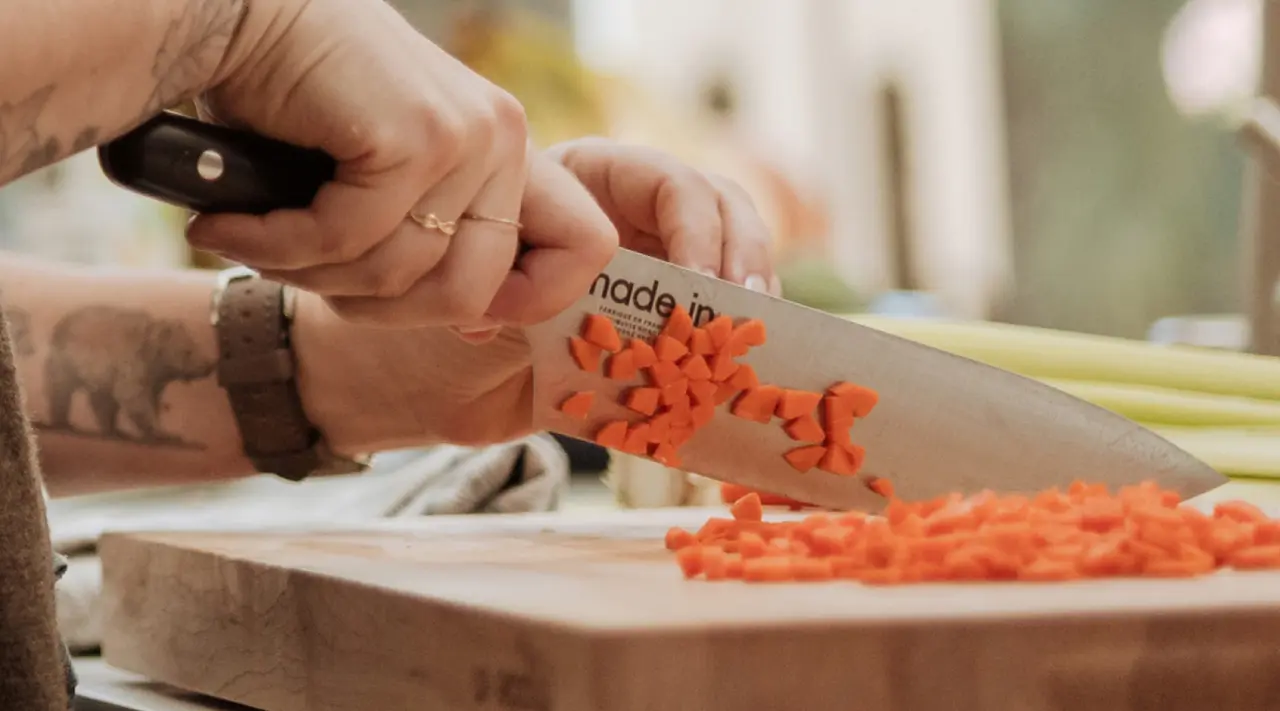
As the closest thing to an all-purpose blade, a Chef Knife can be used for almost every cutting job in the kitchen: chopping vegetables, slicing meat and fish, and even spatchcocking entire chickens or game birds. We even use a Chef Knife to turn minced garlic into a paste, using nothing else besides a cutting board and a sprinkle of salt. If you’re still not convinced, check out our post dedicated to the many and varied uses for this kitchen workhorse.
4 Factors of the Best Chef Knife

Other than size, there are a few additional elements to keep in mind when shopping for your ideal knife. Since this will likely be your most-used blade, you’ll want to make sure that it’s made to last and designed to perform.
Comfortable Grip
Remember the bit about how your knife should feel like an extension of your hand? A huge part of that comes down to whether your knife is actually comfortable to hold. Your knife should feel solid, but never heavy or unwieldy, and you should be able to easily hold it using a pinch grip (our preferred way of holding a knife) without the bolster or other parts of the knife getting in the way.
The Ideal Rockwell Hardness Score
The Rockwell Hardness Score is the most common way to gauge the hardness of your blade. A high Rockwell Score (low 60s) generally indicates an extremely sharp, but brittle blade, meaning it could break apart during use. These also tend to be high-maintenance and require frequent sharpening and honing. Lower scores (in the low 50s) indicates a softer, more durable blade that’s much harder to keep sharp.
The ideal score is 58+, which indicates a sharp, durable blade that’s easy to maintain and holds a sharp edge without needing to be frequently honed or sharpened. For a more detailed look at the Rockwell Hardness Scale and why it’s so important for selecting a good knife, check out our guide.
Full-Tang Blade
Knives can be classified as either “full tang” or “partial tang.” Those referred to as “partial tang” are made by welding separate blades and handles together, creating a weak point at the center.
Full tang knives are forged from a single rod of high-quality metal that extends from the knife’s base to its tip, creating a solid and sturdy blade. To form the handle, two pieces of a resilient material—usually wood or plastic—are fastened around the grip.
Full tang designation generally indicates a more balanced, durable knife. While a partial tang knife may be cheaper, it’s usually less stable and balanced than a full tang knife, and risks breaking apart with time.
Fully Forged Construction
Knives advertised as “fully forged” have been made from a solid bar of metal (usually steel) that’s been heated until red hot, and then pounded to the desired shape and thickness. This creates a sturdy, compact blade that’s relatively hard, meaning that it’ll hold a sharp edge for a long time.
Fully forged knives are typically preferred over stamped knives, which are “stamped” out of large sheets of metal and cut into the shape of a knife, rather than pounded. While this makes the blade more lightweight than a fully forged one, it often results in a less sharp and durable knife that’s prone to denting, warping, or breaking apart altogether. Read up on some of the more specific characteristics of forged vs. stamped knives in our dedicated guide.
How Do Chef Knives Compare to Other Knives?
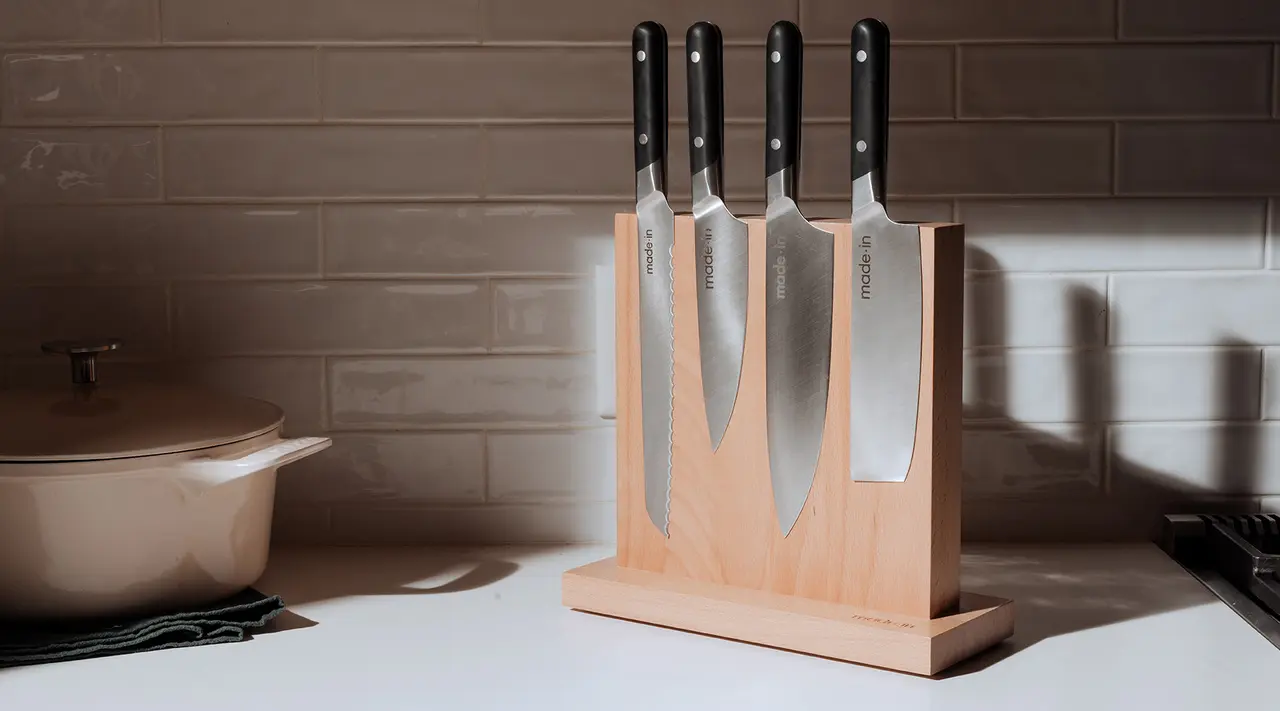
Most Western knife blocks include Chef Knives as well as Paring and Bread Knives. These are often supplemented with specialty blades like the Carving Knife. Japanese-style knives like the Santoku and Nakiri are increasingly popular outside of Japan—Nakiris are often included in Knife Sets.
Some of these blades are comparable to a Chef Knife, but most others are intended to be auxiliary. Here’s how each one stacks up against a Chef Knife, and how to decide which ones you need.
Chef Knife vs. Santoku Knife
While a Chef Knife has a curved edge designed to be used with a rocking motion, a Santoku has a flat edge, meaning it’s used with a straight up-and-down chopping motion. Because of its unique shape, small size (usually around 5”-7”), and relatively thin, fluted blade, a Santoku is incredibly utilitarian. For a more detailed comparison of these two popular knife shapes, check out our guide to Santoku vs. Chef Knives.
Chef Knife vs. Nakiri Knife
With its boxy, blunt profile and thin, lightweight blade, the Japanese Nakiri Knife is less sturdy than a Chef Knife or Santoku Knife, meaning it’s not as adept at cutting meat or tougher ingredients. While this makes it less of an all-purpose knife, it’s also unrivaled in its intended purpose—the ability to precisely and efficiently slice through vegetables as well as any mandoline.
If you’re still on the fence about whether or not to buy a Nakiri, check out our post on the differences between the Nakiri and Chef Knife.
Chef Knife vs. Paring Knife
A Paring Knife—sometimes called a petty knife—features a short, curved blade that’s typically around 4” or smaller. Because of its size, it’s ideal for precise tasks like hulling, peeling, and supreming, and is particularly useful when dealing with irregularly-shaped fruits and vegetables. From its small size to intended uses, this knife is the least like a Chef Knife and is another foundational piece of any knife collection.
Chef Knife vs. Carving Knife
Similar to a Chef Knife, a Carving Knife has a slightly curved blade that tapers toward the end, but it’s typically longer—around 9”—and has a more pronounced tip. This design makes a Carving Knife ideal for making long, even slices of meats like brisket or turkey, as it reduces the number of strokes needed to cut cleanly through muscle and fat. While a Chef Knife will work in a pinch, a Carving Knife is a must-have if you regularly cook large cuts of meat (and still worth having, even if only ever used on holidays).
How Do You Care for a Chef Knife?
Like any tool, a Chef Knife requires proper care and maintenance in order to do its best work. Outside of regular sharpening, there’s not much you have to worry about—just make sure you’re hand washing your knife with a non-abrasive cleaner and sponge right after using, drying thoroughly, and storing properly. For further info, check out our detailed guide to knife care.
How to Sharpen Kitchen Knives
When sharpening your knife at home, we strongly recommend using a whetstone (also called a sharpening stone), an abrasive stone used to slowly shave miniscule layers of metal off the edge to reveal a sharpened blade. We prefer this method over the typical electric sharpener for its superior control.
Whetstones do take some getting used to, so if you’re not comfortable using one on your own, taking your knife to a professional sharpener a few times a year also works. Note: honing—which is not the same as sharpening—is often all that’s needed to restore a blade’s edge. It’s easily done at home, so start there before involving a professional. Typically, knives should be sharpened once or twice a year, and honed three to four times a year.
How Much Is a Chef Knife?
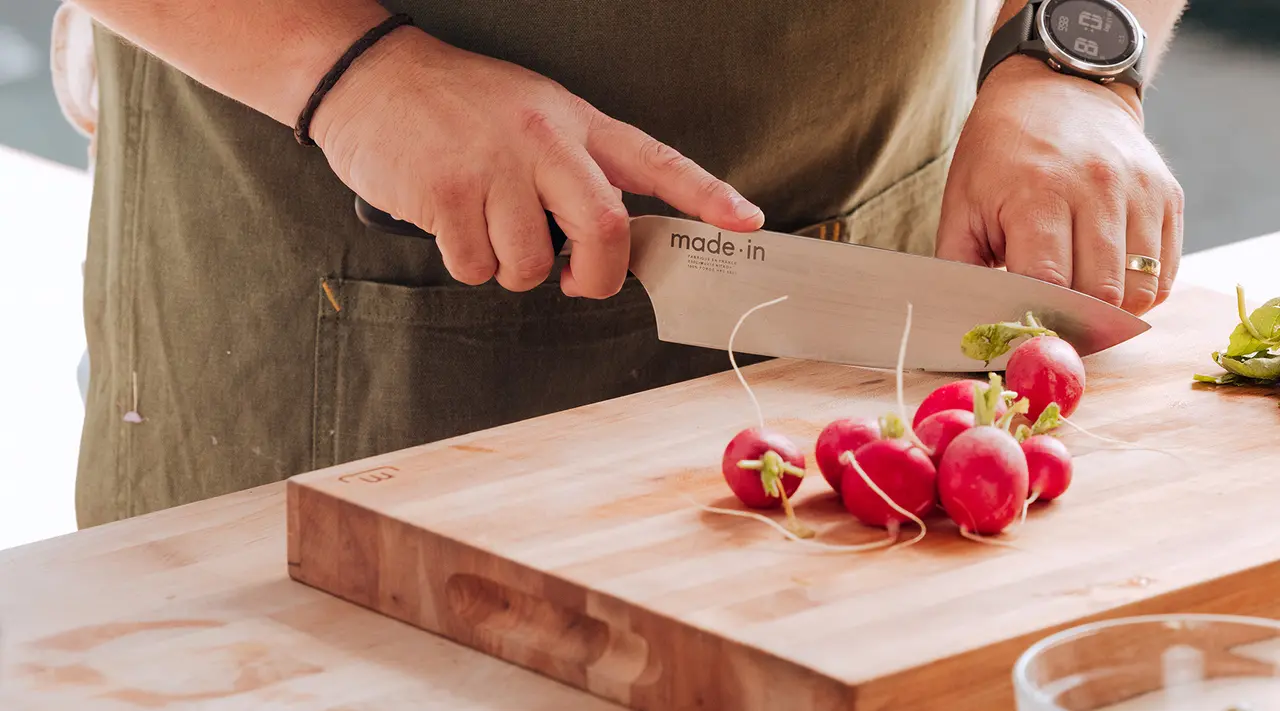
Chef Knives vary wildly in price—you can spend anywhere from $10 to $10,000 (or more), depending on factors like country of origin and manufacturing equipment used. We believe there’s a healthy middle ground when it comes to buying a quality knife at a lower cost.
If you’re a home cook looking for a sturdy, dependable blade that can hold its edge and will last for years, a good price point to start at is around $100. It’s not the least expensive item you’ll buy for your kitchen, but it’s also one of your most frequently used. And since it’ll last for years without needing to be replaced, the return is well worth the investment.
Ready to Shop?
Now that you know some of the key elements to look out for in a Chef Knife and the difference between a Chef Knife and other common knife styles, hopefully you’ve narrowed down how to find the knife that’s right for your hand and your cooking style.
If you’re overwhelmed by all the options out there, Made In’s full tang, fully forged Chef Knife is an excellent place to start. With a Rockwell Hardness scale of 58+, this perfectly balanced knife holds its edge beautifully without needing frequent sharpening—meaning you can focus on honing your julienne technique.
